As if stepping into a time machine, Fortaleza shows you what tequila tasted like before processes were sped up in the name of “efficiency.” We take our time, produce only in small batches, and are proud of what we do.
Take a look at our process below, by selecting a tab for each step. You won’t see anything fancy and high-tech – and that’s just the way we like it.
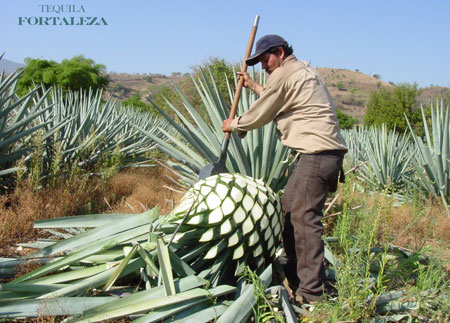
Our agaves come from the heartland of tequila, known as Tequila Valley, in Jalisco, Mexico. We allow them to grow and mature for at least 8 years before they are harvested.
The agave that grows around our distillery are very sweet and mineral-rich, and have a lot to do with the signature aromas and flavors inside of Fortaleza tequila.
These mature agave plants can grow to be very large. On average, each plant can produce about 8 or 9 bottles of tequila.
It takes a specially trained “jimador” to harvest these giant blue agave plants, with their dangerously sharp points, it can cause injury if you’re not careful.
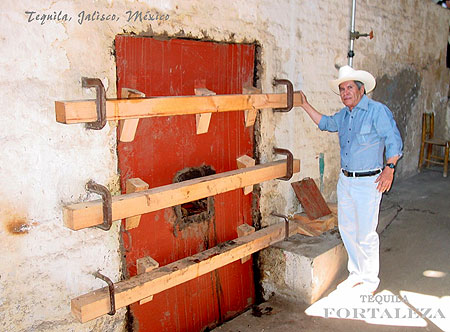
Agaves are slowly cooked for 36 hours in our very old stone oven. We take our time here, and we don’t rush the process because the results are fantastic. Agaves are careful loaded by hand, and then the door is sealed shut, and steam is injected into the oven.
As the agaves slowly cook, starches inside the agaves turn into sugars, and deep caramelization happens best when you slow down and use the old traditional way.
Once the agaves are cooked, they must cool down. It takes another 24 hours for them to be at a temperature where they can be hand-removed from the oven, and advance to the next stage in the process.
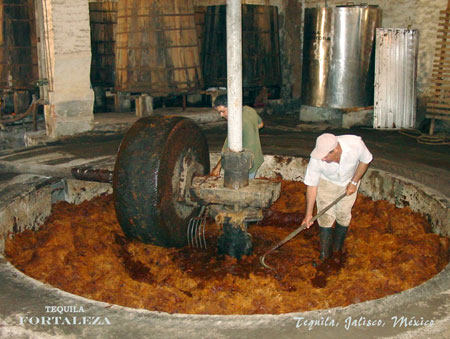
Our tequila is 100% stone crushed. Using a “tahona” (a large round 2-ton volcanic stone) pulled by an electric tractor (which took the place of our mule after he died) all of the agave fibers are crushed in a stone pit inside of our distillery. In this step the sugars are separated from the fibers of the plant so that the fermentation can fully occur.
Using a tahona is considered “inefficient” by modern standards. It takes longer, and still leaves some sugar behind. But once again, what matters to us is the final product, and not the bottom line.
If you’re familiar with cooking, you already know that producing sauces (or guacamole) by grinding them with a mortar and pestle produces a very different end result than if you were to speed up the process with a food processor. The same thing is at play here.
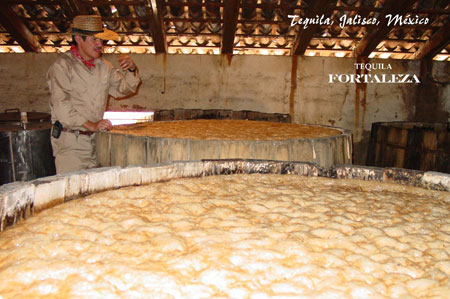
Fermentation is done in wood open-air tanks. Using a special yeast that has been in our family for generations, we allow it to do its job: eat sugars, and produce alcohol.
Once again, no shortcuts are taken. We don’t add any other sugars to this process. All Fortaleza tequilas are made of 100% blue agave, and no yeast-accelerating chemicals are added. It may take longer, but the results speak for themselves.
It takes about 4 days before the yeast consumes all of the sugar. When fermentation is complete, we pump it to the other side of the room where it can be distilled.
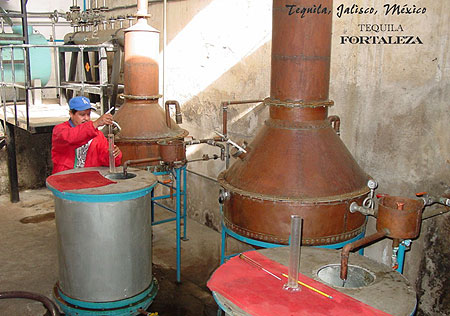
Fortaleza is distilled twice in traditional copper pot stills. These stills have been in place since the distillery was built more than 100 years ago, and they bring a certain amount of “magic” to the process.
The first time through the still we create a product known as “ordinario”, which is approximately 20% alcohol by volume. This ordinario is collected in a stainless steel tank, and then it is sent through the still one more time.
The second pass is when ordinario is turned into tequila. At this stage the tequila is about 46% alcohol. Many tequila brands will distill to 55% or 60% because it is cheaper to store. That’s not how we operate. We distill “close to proof” because we want to preserve as much of the agave flavor as possible.
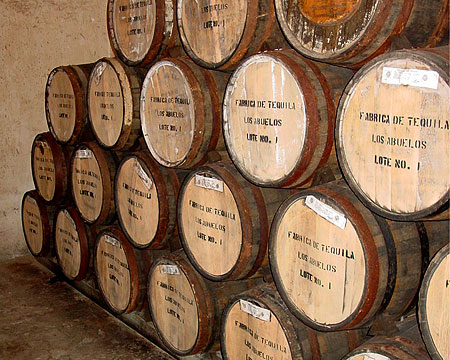
Fortaleza is aged in used American oak barrels. These barrels are re-chipped and re-charred and bring a great deal of depth and complexity to Fortaleza Reposado and Añejo tequilas.
Fortaleza Reposado rests in barrels for 7 months, and Fortaleza Añejo remains for 2 years before it is bottled.

Our bottles are hand-blown in Jalisco, Mexico. As a result, each one is a tiny bit different. Not only do we produce tequila with traditional methods, we also use bottles the way they were made 150 years ago as well.
We have a single, very small bottling station set up inside of our distillery. Tequila is bottled, capped, labeled, and packed in cases for shipment.